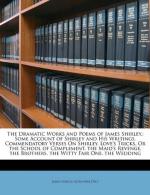|
This section contains 6,226 words (approx. 21 pages at 300 words per page) |

|
SOURCE: Morton, Richard. “Deception and Social Dislocation: An Aspect of James Shirley's Drama.” Renaissance Drama, no. 9 (1966): 227-45.
In the following essay, Morton analyzes Shirley's use of deceptions, tricks, and misunderstandings in his plays to convey conflicts between various social groups in Caroline England.
The temptation to classify minor literary figures as transitional can hardly be resisted in the case of James Shirley, who was born in 1596, the year of the second volume of The Faerie Queene, and died exactly 300 years ago, in 1666, Dryden's Annus Mirabilis. As a comic dramatist, he has frequently been identified as a link between Jonson and the Restoration playwrights, between the comedy of humours and the comedy of manners. There is much to support such a view. Forsythe's thorough documentation1 has revealed Shirley's indebtedness to the Elizabethan and Jacobean stage. The regular appearance in his plays of courtly fashion and the Truewit-Witwoud-Witless ritual of...
|
This section contains 6,226 words (approx. 21 pages at 300 words per page) |

|


